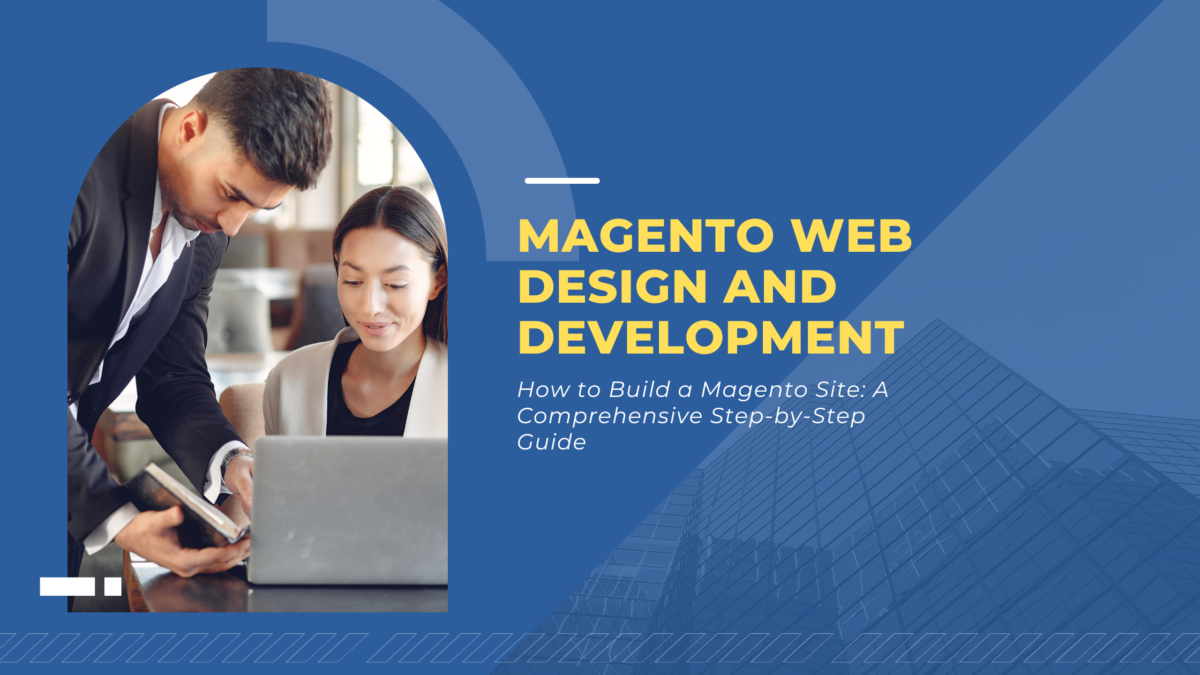
How to Build a Magento Site: A Comprehensive Step-by-Step Guide-2023
 In this guide, we will walk you through the process of building a Magento site, step by step. Whether you are a beginner or an experienced developer, this comprehensive guide will provide you with valuable insights and actionable tips to help you create a successful Magento website. By following the steps outlined below, you will be able to build a high-quality Magento site that stands out from the competition and attracts both customers and search engines.
In this guide, we will walk you through the process of building a Magento site, step by step. Whether you are a beginner or an experienced developer, this comprehensive guide will provide you with valuable insights and actionable tips to help you create a successful Magento website. By following the steps outlined below, you will be able to build a high-quality Magento site that stands out from the competition and attracts both customers and search engines.
Step 1: Planning and Research
Before diving into the development process, it’s crucial to plan and research your Magento site thoroughly. This step sets the foundation for a successful project. Here are the key aspects you need to consider:
- Define your goals and objectives: Clearly outline what you want to achieve with your Magento site. Whether it’s boosting online sales, enhancing user experience, or expanding your reach, having well-defined goals will guide your decision-making process.
- Identify your target audience: Understanding your target audience is essential for tailoring your website’s design, content, and functionality. Conduct market research to gain insights into your customers’ preferences, demographics, and online behavior.
- Keyword research: Identify relevant keywords related to your industry, products, or services. This will help you optimize your website for search engines and drive organic traffic to your Magento site.
Step 2: Choosing the Right Magento Hosting
Selecting the right hosting provider for your Magento site is crucial for its performance, security, and scalability. Consider the following factors when choosing a hosting solution:
- Performance: Look for a hosting provider that offers optimized servers and fast load times. A slow-loading website can negatively impact user experience and search engine rankings.
- Security: Ensure your hosting provider offers robust security measures, such as SSL certificates, regular backups, and server-level security protocols. Protecting sensitive customer data is of utmost importance.
- Scalability: As your business grows, your website should be able to handle increased traffic and accommodate additional features and functionalities. Choose a hosting provider that offers scalable solutions.
Step 3: Magento Installation and Setup
Now that you have completed the initial planning and selected a suitable hosting provider, it’s time to install and set up your Magento site. Follow these steps:
- Download Magento: Visit the official Magento website and download the latest version of the platform.
- Install Magento: Depending on your hosting provider, you can install Magento using a one-click installer or manually upload the files to your server. Follow the installation instructions provided by Magento.
- Configure your store: Once Magento is installed, you can begin configuring your store settings, including language, currency, payment gateways, shipping methods, and tax rules.
Step 4: Designing Your Magento Site
The design of your Magento site plays a crucial role in attracting and engaging visitors. Consider the following aspects when designing your website:
- Choose a Magento theme: Select a visually appealing and responsive theme that aligns with your brand identity. Ensure the theme is compatible with the latest version of Magento and offers customizable options.
- Customize your theme: Personalize your theme by adding your logo, brand colors, and unique design elements. Make sure the website layout is user-friendly, intuitive, and optimized for different devices.
- Optimize for mobile: With the increasing use of mobile devices, it’s essential to create a mobile-friendly website. Optimize your Magento site for mobile responsiveness to provide a seamless browsing experience on smartphones and tablets.
Step 5: Adding Products and Content
Once you have set up the foundation of your Magento site, it’s time to populate it with products and compelling content. Follow these steps to create a captivating online store:
- Product catalog: Organize your products into categories and subcategories for easy navigation. Include high-quality product images, detailed descriptions, pricing information, and customer reviews if available. Optimize product pages with relevant keywords to improve search engine visibility.
- Content creation: Create valuable and engaging content to attract and retain visitors. Write informative product descriptions, blog posts, tutorials, and guides related to your industry. Incorporate relevant keywords naturally within your content to boost SEO.
- User-generated content: Encourage customers to leave reviews, ratings, and comments on your products. User-generated content not only provides social proof but also helps in improving search engine rankings.
Step 6: Implementing SEO Strategies
To outrank your competitors in search engine results, implementing effective SEO strategies is essential. Here are some key techniques to consider:
- Keyword optimization: Conduct thorough keyword research and incorporate relevant keywords into your website’s meta tags, headings, URLs, and content. However, avoid keyword stuffing as it can harm your rankings.
- On-page optimization: Optimize your website’s structure, internal linking, and navigation to enhance user experience and search engine crawlability. Ensure your site has clean and SEO-friendly URLs, descriptive meta tags, and well-structured headings.
- Quality backlinks: Build high-quality backlinks from authoritative websites in your industry. Guest posting, influencer collaborations, and content promotion can help you acquire valuable backlinks that boost your website’s authority.
- Site speed optimization: Optimize your Magento site for fast loading times. Compress images, enable browser caching, minify CSS and JavaScript files, and leverage content delivery networks (CDNs) to enhance site performance.
Step 7: Analyzing and Improving
To continuously improve your Magento site’s performance and SEO, it’s crucial to analyze data and make data-driven decisions. Follow these steps:
- Use analytics tools: Set up Google Analytics and other analytics tools to track website traffic, user behavior, conversions, and other key metrics. Analyze the data to identify areas for improvement.
- Conversion rate optimization (CRO): Optimize your website’s design, layout, and call-to-action buttons to increase conversions. A/B test different variations and analyze the results to determine the most effective elements.
- Regular content updates: Keep your website fresh and up-to-date by regularly adding new products, blog posts, and informative content. This encourages repeat visits from both users and search engine crawlers.
Conclusion
Building a successful Magento site requires careful planning, meticulous execution, and ongoing optimization. By following this comprehensive step-by-step guide, you’ll be well-equipped to create a high-performing website that outranks your competitors in Google search results. Remember to adapt to the evolving SEO landscape, stay updated with industry trends, and provide valuable content and experiences to your visitors.

Leave a Comment